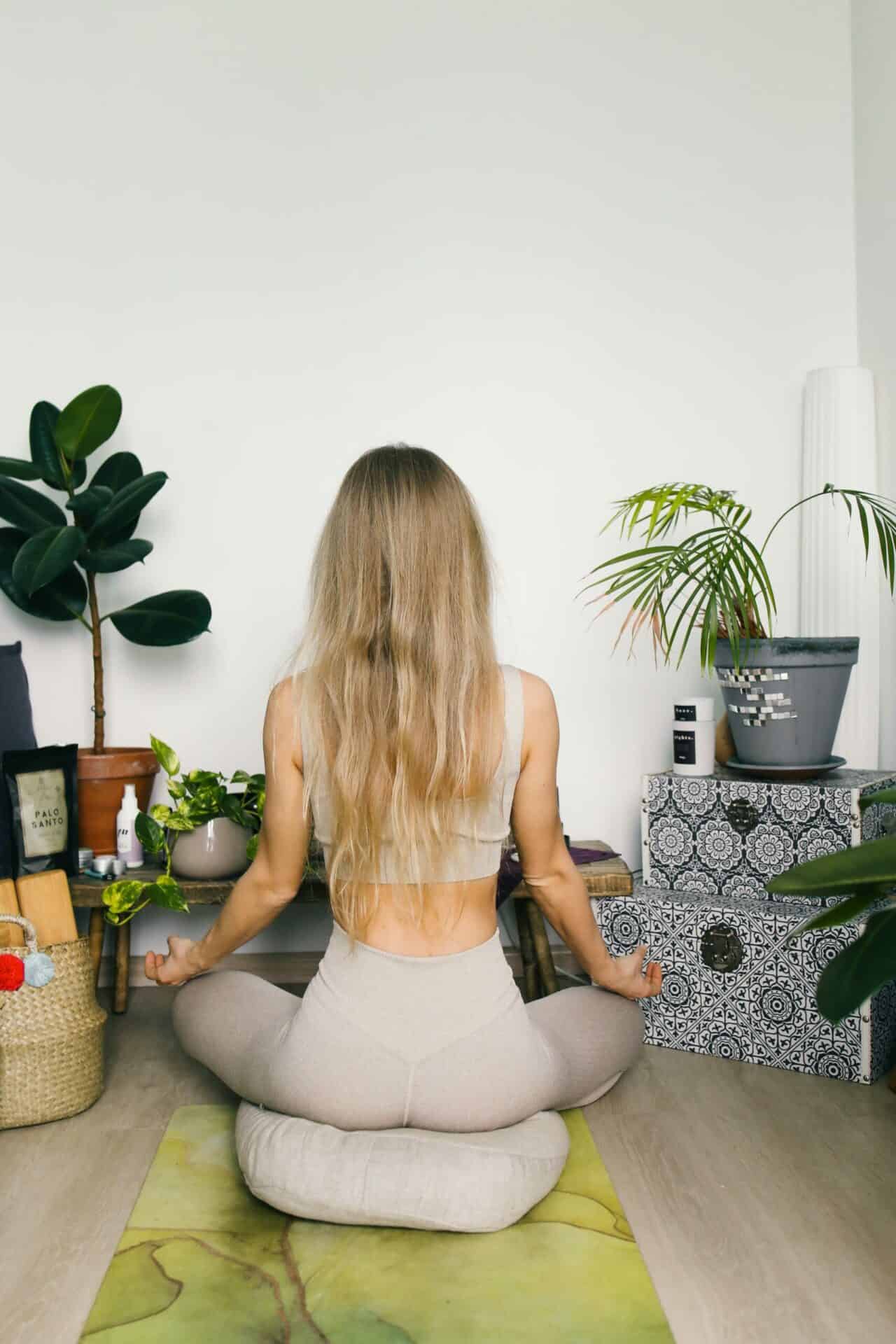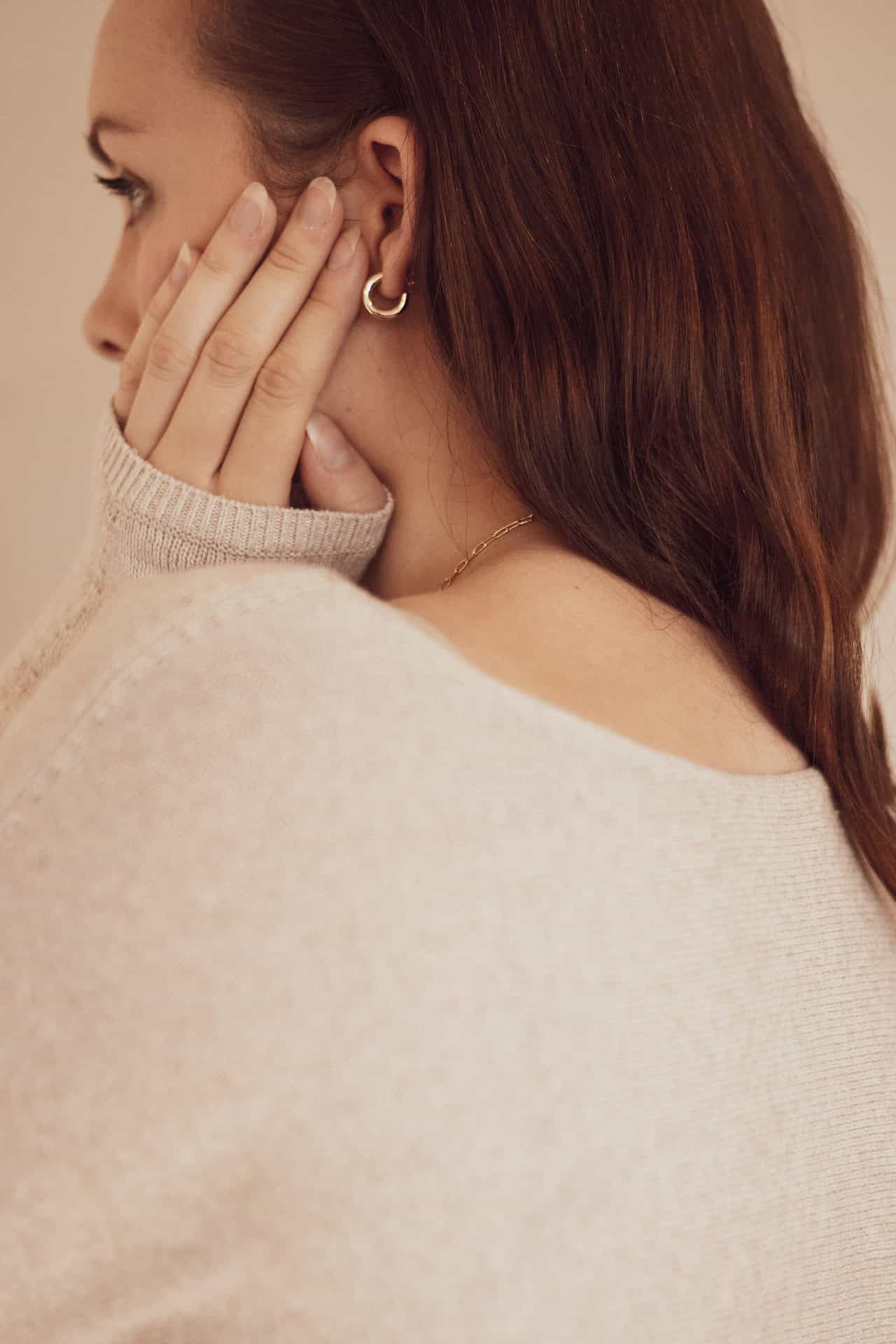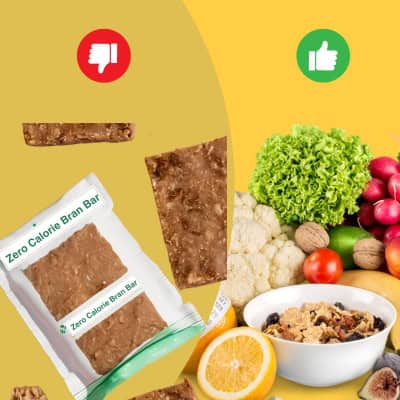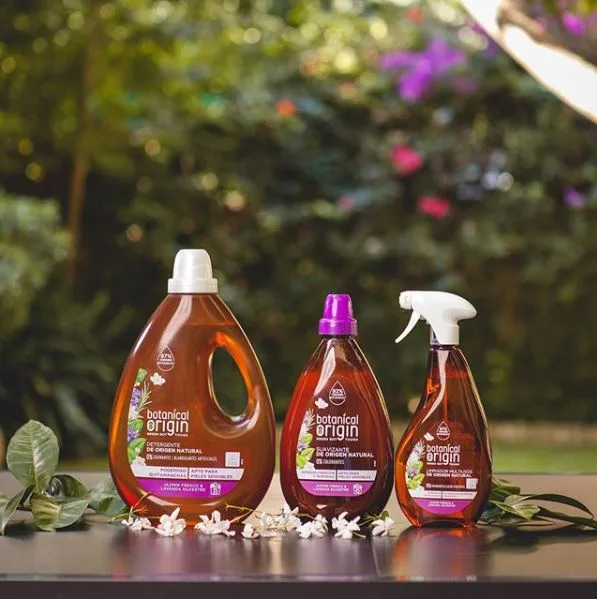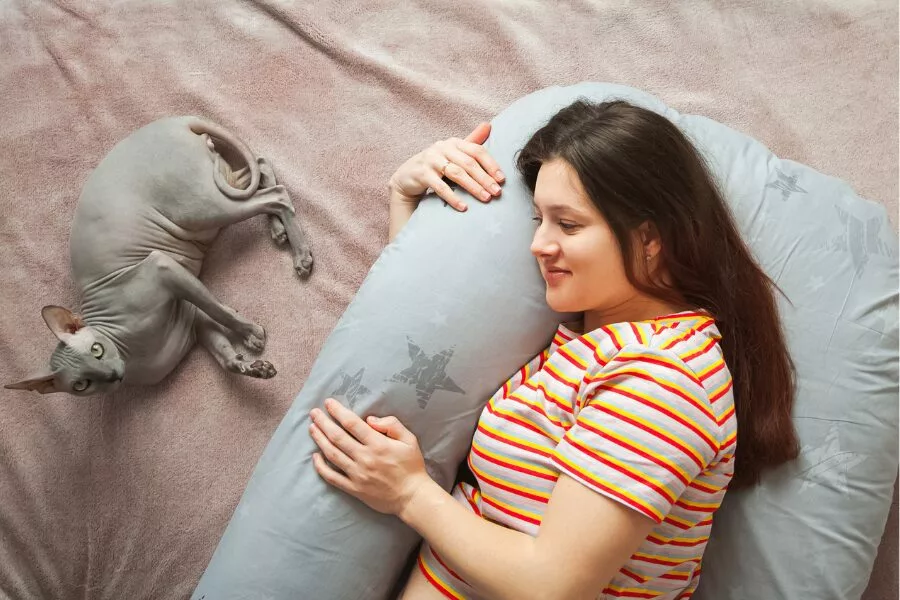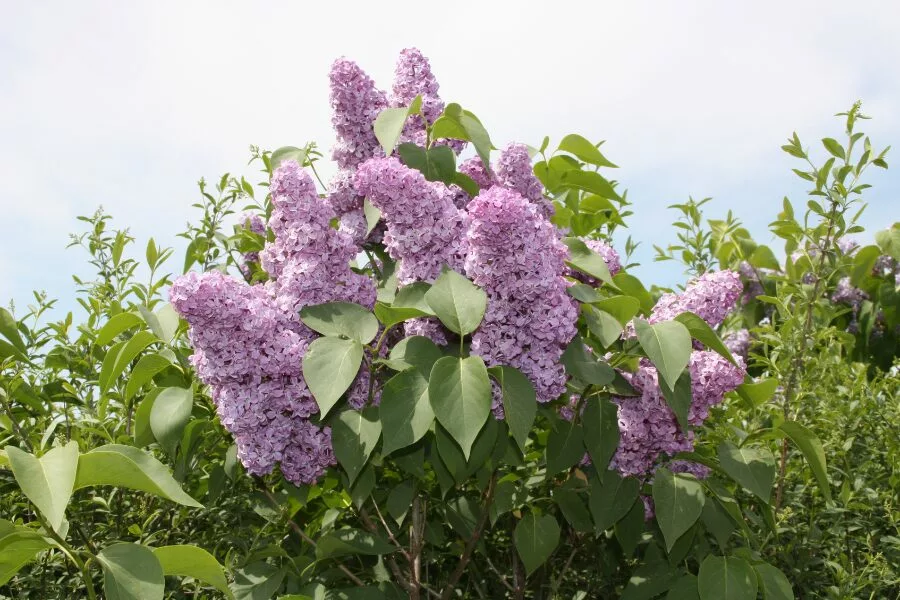Embarking on the journey of crafting an eco-friendly meditation pillow is not just about creating a functional item; it’s about embracing sustainable living and mindfulness. This guide is designed to empower you with easy, step-by-step instructions to create a meditation pillow that aligns with your eco-conscious values. We’ll explore the benefits of using sustainable materials and how a DIY approach can deepen your mind-body connection.

Step By Step DIY Meditation Pillow
Step 1: Selecting Sustainable Materials
The journey to crafting an eco-friendly meditation pillow begins with the careful selection of sustainable materials. The materials you choose not only define the comfort and durability of your pillow but also its impact on the environment. Let’s explore the best options for both the filling and the fabric of your meditation pillow.
Sustainable Fillings:
- Buckwheat Hulls: A popular choice for meditation pillows, buckwheat hulls are the hard outer shells of buckwheat grains. They are firm yet flexible, providing excellent support and conforming to your body shape. Buckwheat hulls are natural, biodegradable, and allow air circulation, which helps in keeping the pillow cool.
- Flaxseed: Another eco-friendly option, flaxseeds are smaller and smoother compared to buckwheat hulls, offering a softer feel. They are also natural and biodegradable. Some people prefer mixing flaxseed with dried lavender or chamomile to add a calming scent to their meditation experience.
- Kapok Fiber: Derived from the seed pods of the kapok tree, this material is light, hypoallergenic, and has a down-like softness. It’s a sustainable alternative to synthetic fillers and is completely biodegradable.
Eco-Friendly Fabrics:
- Organic Cotton: Cotton is a versatile and widely used fabric, but opting for organic cotton ensures that no harmful pesticides or chemicals are used in its production. It’s soft, durable, and machine washable, making it an excellent choice for meditation pillow covers.
- Hemp: Known for its strength and durability, hemp fabric is resistant to mold and UV light. It softens with each wash, making it more comfortable over time. Hemp cultivation requires less water and no pesticides, making it a highly sustainable option.
- Recycled Fabrics: Using recycled fabrics, such as those from old clothes or upholstery, is a great way to upcycle and reduce waste. This approach not only gives a second life to existing materials but also adds a unique and personal touch to your meditation pillow.
Sourcing Materials Responsibly:
When sourcing these materials, it’s important to consider their origin and the practices of the manufacturers. Look for certifications like the Global Organic Textile Standard (GOTS) for organic fabrics, which ensure that the materials are produced in an environmentally and socially responsible manner. Local craft stores, online eco-friendly marketplaces, and specialty fabric stores are good places to start. Additionally, consider reaching out to local sewing or crafting groups for recommendations on where to find sustainable materials.
Step 2: Measurement and Cutting
Crafting your eco-friendly meditation pillow requires precision in measurement and cutting, ensuring that the final product is both functional and aesthetically pleasing. This chapter will guide you through the process of measuring and cutting your chosen fabric, focusing on efficiency and minimal waste.
Measuring Your Pillow
- Decide on the Size: Standard meditation pillows are typically round and about 13 to 15 inches in diameter. However, you can customize the size based on your preference and comfort.
- Marking the Fabric: Once you’ve decided on the size, lay your fabric flat on a clean surface. Use a tailor’s chalk or a washable fabric marker to draw two circles (for the top and bottom of the pillow) on the fabric. If you’re making a 14-inch diameter pillow, use a compass or a string tied to a chalk to draw perfect circles.
- Adding Seam Allowance: It’s important to add a seam allowance to your measurements. Generally, adding about ½ inch to 1 inch around the edge of your marked circle will suffice. This extra fabric is where you’ll stitch the pillow together.
Cutting the Fabric
- Using the Right Tools: For a clean cut, use sharp fabric scissors or a rotary cutter. Dull tools can lead to jagged edges and uneven cuts.
- Cutting the Circles: Carefully cut along the outer edge of your seam allowance line. Ensure that your cuts are smooth and consistent to avoid any irregularities in the shape of your pillow.
- Cutting the Side Strip: You’ll also need a strip of fabric for the side of your pillow. The width of this strip should be equal to the desired height of your pillow plus seam allowance. The length should be long enough to go around the circumference of your pillow (approximately the diameter of your circle multiplied by π or 3.14).
Minimizing Waste
- Efficient Layout: Arrange your pattern pieces in a way that maximizes the use of fabric. Try to fit the pieces close together, reducing the amount of unused fabric.
- Repurposing Scraps: Keep any leftover fabric scraps for future projects. Small pieces can be used for patchwork, stuffing small cushions, or decorative elements.
- Zero Waste Principle: Embrace the zero waste principle by planning your project to use as much of the fabric as possible. This approach not only reduces waste but also encourages creativity in using every bit of your material.
Personalizing Your Design
This stage of the process is also an opportunity to infuse your personal style into the pillow. Whether it’s through the choice of fabric pattern, the shape of the pillow, or the addition of decorative elements like patches or embroidery, this is your chance to make the meditation pillow uniquely yours.
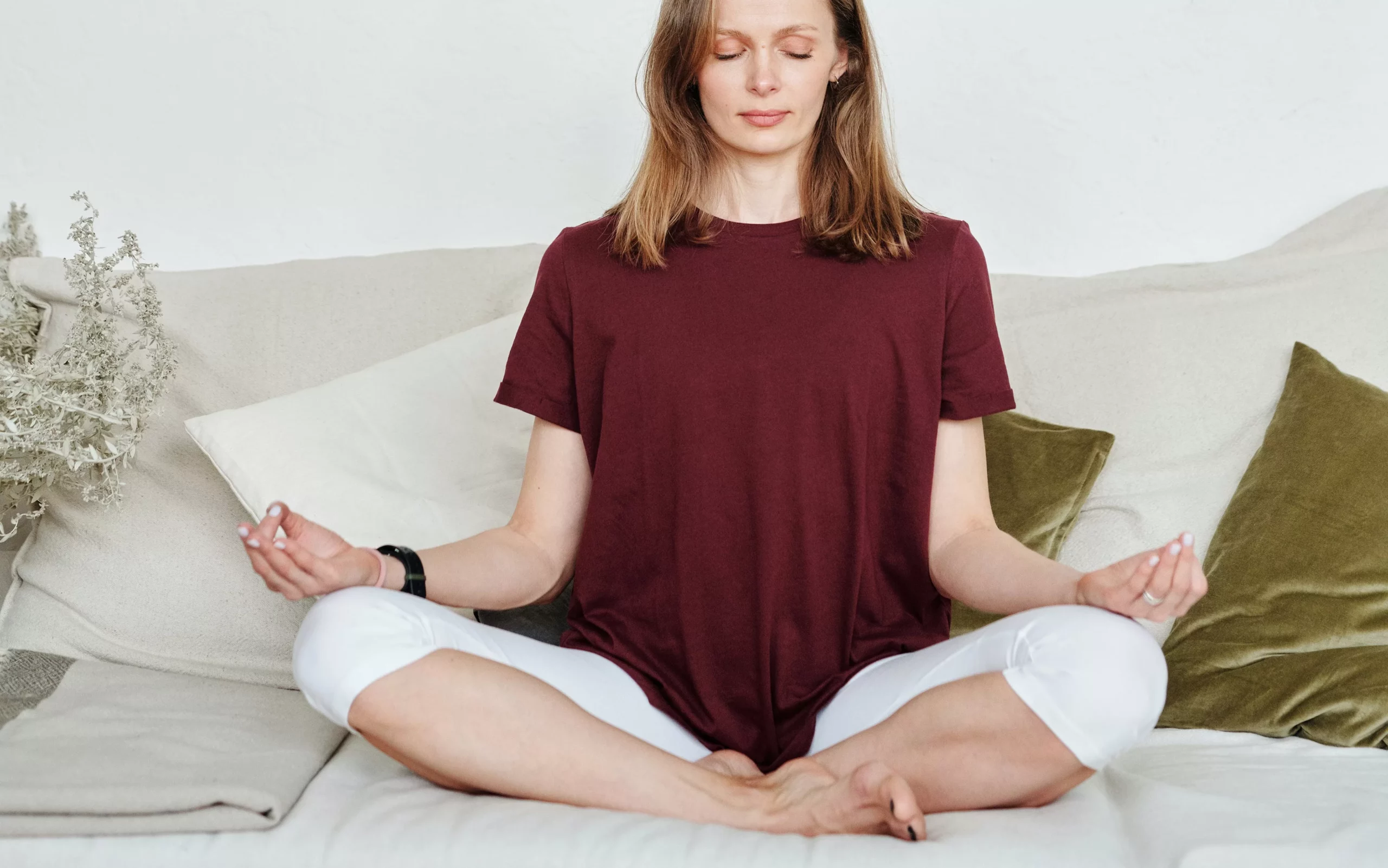
Step 3: Sewing Techniques
Sewing your meditation pillow is a rewarding part of the crafting process. Whether you’re new to sewing or have experience, these techniques will help you create a sturdy and beautiful meditation pillow. We’ll cover the basics of stitching the main body and attaching the cover.
Preparing to Sew
- Choose Your Thread: Select a strong, durable thread that matches your fabric. For eco-friendly options, consider organic cotton or recycled polyester thread.
- Set Up Your Sewing Machine: If you’re using a sewing machine, set it up with the appropriate needle for your fabric type (a universal needle is usually fine for most fabrics). If you’re hand-sewing, ensure your needle is sharp and suitable for the fabric’s thickness.
- Practice Stitches: If you’re a beginner, practice making straight stitches on a scrap piece of fabric. Aim for uniform stitch length and straight lines.
Sewing the Main Body
- Stitching the Side Strip: Start by sewing the short ends of the side strip together, right sides facing each other, to create a loop. This will form the side of your pillow.
- Attaching the Top and Bottom: Pin the side strip evenly around the edge of one of the circular pieces (the top or bottom of your pillow), right sides together. Sew around the circumference. Repeat this step with the other circular piece, but leave an opening of about 4-6 inches for the filling.
- Reinforcing Seams: Go back over the seams, especially around the opening, to reinforce them. This ensures that your pillow can withstand the weight of the filling and regular use.
Attaching the Cover
- Creating a Cover: If you’re making a removable cover, cut another set of circles and a side strip from your chosen fabric, adding an extra inch to the diameter for ease of removal. Sew as you did for the main body.
- Adding a Closure: For the cover, consider adding a zipper, buttons, or Velcro along one seam for easy removal and cleaning. If you’re new to sewing closures, a simple envelope closure might be the easiest option.
Finishing Touches
- Trimming and Clipping: Trim any excess fabric from the seams and clip curves to help the fabric lay flat when turned right side out.
- Turning and Pressing: Carefully turn your pillow cover right side out through the opening. Use a blunt object like a chopstick to push out the seams fully. Press the seams with an iron for a crisp finish.
- Hand Stitching the Opening: After filling your pillow (which we’ll cover in the next chapter), hand stitch the opening closed with a ladder or slip stitch for a neat finish.
Also Read: Top 10 Bamboo Pillows Championing Eco-Friendly Sleep
Step 4: Filling the Pillow
Filling your meditation pillow correctly is essential for achieving the desired comfort and support. The type of filling you choose can greatly affect the pillow’s firmness, texture, and overall feel. Here, we’ll discuss various eco-friendly filling options and guide you through the process of filling your pillow.
Filling the Pillow
- Preparing the Pillow: Before filling, make sure your pillowcase is turned right side out and the seams are well-pressed. If you’ve made a removable cover, set it aside for now.
- Adding the Filling: Use a funnel or a makeshift paper cone to pour the filling into the pillow. This can be a bit messy, so doing it over a clean surface or outdoors is advisable.
- Adjusting for Firmness: Fill the pillow until it’s about three-quarters full, then test it out by pressing down with your hand. The pillow should compress slightly but not feel hard. Add or remove filling until you achieve your desired firmness. Remember, it’s easier to add more filling later than to take it out, so err on the side of less filling initially.
- Closing the Pillow: Once you’re satisfied with the firmness, sew the opening closed by hand using a ladder or slip stitch. Make sure the stitches are tight and secure to prevent any filling from escaping.
- Adding the Cover: If you’ve made a removable cover, now is the time to put it on. This will protect your pillow and make it easier to clean.
Tips for Perfect Filling
- Even Distribution: As you fill the pillow, periodically shake and pat it to ensure even distribution of the filling.
- Filling Over Time: The filling may settle and compress over time, so keep some extra filling on hand to add as needed.
- Scented Pillows: For an added touch of relaxation, consider mixing in dried lavender or chamomile with your filling.

Step 5: Finishing Touches
Adding finishing touches to your meditation pillow is where your creativity truly shines. This step is all about personalizing your pillow to reflect your style and preferences. Here, we’ll explore various ways to add character and uniqueness to your meditation pillow, from eco-friendly dyes to embroidery and appliqué.
Choosing Eco-Friendly Dyes
- Natural Dyes: If you’re looking to add color to your pillow, consider using natural dyes made from plants, fruits, and vegetables. For example, turmeric can create a vibrant yellow, beetroot for a deep red, and indigo for a rich blue. Natural dyes are not only eco-friendly but also add a unique, earthy tone to the fabric.
- Dyeing Process: The process of dyeing with natural materials often involves preparing the fabric with a mordant to fix the dye. This can be a fun experiment in itself, as different mordants can produce different hues from the same dye material.
Embroidery and Appliqué
- Hand Embroidery: Adding hand-embroidered designs can give your pillow a personal touch. Whether it’s a simple pattern, a meaningful symbol, or an intricate design, embroidery adds texture and character.
- Appliqué: This involves sewing smaller pieces of fabric onto your pillow to create patterns or images. You can use scraps from other projects, making this a great zero-waste option. Appliqué can be as simple or as complex as you like, from geometric shapes to detailed scenes.
Additional Decorative Elements
- Fabric Paints: For those who enjoy painting, fabric paints offer another way to personalize your pillow. You can paint directly onto the fabric, creating designs that range from abstract patterns to detailed illustrations.
- Trims and Tassels: Adding trims, such as lace, ribbon, or piping, along the seams can give your pillow a polished look. Tassels or pom-poms at the corners can add a playful touch.
- Buttons and Beads: Sewing on buttons, beads, or other decorative elements can add both texture and visual interest to your pillow.
Personalization and Functionality
- Adding a Handle: Sewing a simple fabric handle to one side of your pillow can make it more portable and convenient to carry.
- Creating a Pocket: A small pocket on the side of your pillow can be a practical addition, perfect for storing small items like meditation beads or essential oils.
Final Touches
- Quality Check: Once you’ve added your decorative elements, give your pillow a final inspection. Ensure all additions are securely attached and that the pillow maintains its shape and comfort.
- Setting the Dye: If you’ve used natural dyes, set the color by washing the pillow cover in cold water with a mild detergent. This helps to ensure the color stays vibrant.
Also Read: Create Easy DIY Christmas Pillow Covers in 10 Minutes
Step 6: Care and Maintenance
Proper care and maintenance are crucial for extending the life of your eco-friendly meditation pillow and preserving its natural qualities. Here are some effective methods to keep your pillow in the best condition:
- Regular Cleaning: If your pillow has a removable cover, take it off and wash it regularly. Most organic fabrics can be gently machine washed or hand washed with a mild detergent. Avoid harsh chemicals as they can break down natural fibers more quickly.
- Spot Cleaning: For non-removable covers, spot clean any stains with a soft cloth and a mixture of mild detergent and water. Be gentle to avoid damaging the fabric.
- Air Drying: Always air dry the pillow and cover, as high heat from dryers can shrink or damage natural materials. Direct sunlight can also be beneficial for natural fillings like buckwheat hulls, as it can help refresh and deodorize them.
- Refreshing the Filling: Over time, natural fillings like buckwheat hulls may need to be replaced or refreshed. You can purchase new hulls and replace them as needed. This not only maintains the pillow’s shape and support but also ensures hygiene.
- Storage: When not in use, store your meditation pillow in a cool, dry place. Avoid damp areas as natural fillings can attract mold and mildew.
- Mindful Handling: Treat your pillow with care. Avoid throwing or compressing it harshly, as this can affect the shape and integrity of the filling.
Conclusion
Creating your own eco-friendly meditation pillow is a rewarding experience that combines sustainability with personal well-being. This guide aims to inspire and equip you with the knowledge to embark on this fulfilling DIY journey. Embrace the process, and enjoy the satisfaction of crafting something that benefits both you and the planet.
If you’re inspired by the idea of creating eco-friendly DIY projects like this DIY meditation pillow, we invite you to explore our collection of home & lifestyle blogs.

